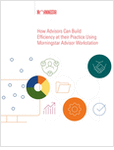The Center for Consumer Information & Insurance Oversight (CCIIO) has posted a risk scoring rule proposal that could affect how insurers see Americans with known health problems for years to come.
CCIIO — the federal agency that runs Patient Protection and Affordable Care Act (PPACA) commercial health insurance programs for the U.S. Department of Health and Human Services — developed the discussion paper for a meeting, scheduled for March 31, on the PPACA risk-adjustment program.
See also: CMS schedules PPACA risk-adjustment clash
The PPACA risk-adjustment program is supposed to be a permanent program that helps health insurers and managed care companies sell individual and small-group major medical coverage without the use of medical underwriting.
The individual and small-group coverage issuers in the program are supposed to give each enrollee a health risk score using a government-approved Hierarchical Condition Categories (HCC) system, then use the enrollees’ HCC scores to estimate how risky the plan is. Issuers that have low risk scores, because their enrollees appear to be healthy, are supposed to send cash to the government. CCIIO is supposed to transfer the cash to plans that have enrollees with high risk scores.
In theory, for example, the program could make covering a 50-year-old with hemophilia as attractive as covering a healthy 25-year-old. Successful efforts to hold the claims of an enrollee with hemophilia down could make covering the patient with hemophilia more profitable than covering a 25-year-old who looks healthy coming in, but ends up breaking a leg.
CCIIO has been running a temporary version of the program based on past results. To get a new, real-time version of the risk-adjustment program going, CCIIO needs to persuade individual and small-group issuers to agree to risk-scoring rules, assign risk scores to all of the enrollees, and pay cash into the risk-adjustment program.
See also: How sick is everyone? A vast PPACA tracking system takes shape
CCIIO scheduled the March 31 meeting to give issuers and other interested parties a chance to comment on the procedures described in the risk-scoring discussion paper. Comments on the paper are due April 22.
The authors of the paper say they want to create a system that adjusts for plan demographics and other factors; that lets physicians assign as many diagnosis codes as they like without somehow hurting their patients; that does not actively reward physicians, or coverage issuers, for assigning the same patient many related diagnosis codes; and that reflects the nature of people who have individual and small-group commercial coverage.
In the system proposed in the discussion paper, a plan can classify a patient as having diabetes with acute complications, diabetes with chronic complications, or diabetes without complications, but it cannot classify the same patient as having both diabetes with acute complications and diabetes with chronic complications, because the system lets a plan code a patient only for the most severe manifestation of a disease.
If a patient had both diabetes and rheumatoid arthritis, the plan could use the codes for both conditions, because the scoring system would treat those conditions as separate conditions, the authors say.
They also set different “risk adjustment model factors” for many conditions, and have different categories of condition risk factors for adults, children and infants. Within each category, the model’s factors also vary according to whether the insured has platinum, gold, silver, bronze or catastrophic coverage.
In the platinum coverage category, for example, the risk adjustment model factor for an extremely premature infant with a severity level of 5 is 378.927.








 March 24, 2016 at 01:26 PM
March 24, 2016 at 01:26 PM










